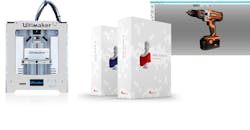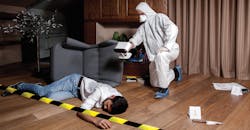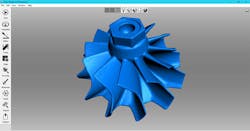Every industrial design group is always on the lookout for the best new 3D printer, one that's faster and more accurate than ever before. The faster you fabricate a new prototype the faster the suits can tell you to push to production or get your butts back to the digital drawing board.
Sure, shaving off some print time is never a bad thing, but for a much smaller investment than a new industrial 3D printer, you can upgrade your 3D scanning capabilities. An hour saved is an hour saved, after all.
With Artec Studio 12 Professional, released in May for use with Artec 3D scanners, that's exactly what one Bay area 3D printing and rapid prototyping company, Honeypoint3D, found out after just month of using it.
Formerly a boutique custom 3D print shop in a high end shopping district, the business pivoted after the explosion in rapid prototyping demand. It now specializes in making CAD models for customers, along with offering online classes to teach people how to create professional 3D scans. Charging by the hour, the company's revenue completely relies on how fast the technician can complete a scan.
"Hobbyist can spend as much time as they want on waiting for things to happen," explains co-founder Nick Kloski. "But I need throughput right now, because I'm running a business. If things are slow, I'm losing money."
With massive jumps in global registration and texture mapping, and the added feature of automated sensitivity control, Artec 12 allows even novice users to get an optimal scan. For professionals, the impact is much more significant.
Kloski estimates it's three to four times faster, and also allows for a more natural motion while using a portable scanner such as Eva. Usability has also been simplified for scanning large objects such as cars by automating sensitivity. If you're walking around a car, the software changes form low sensitivity for a car door, and increases for more detailed parts such as the undercarriage.
"That is the ultimate goal of all software," Kloski says. "To understand what you're doing and help you without having you help yourself."
Technically speaking, some features are even faster than Kloski estimates. The global registration, which compares the different points to make the mesh, is up to 20 times faster than Studio 11. The texture mapping is up to 10 times faster.
Honeypoint3D employs Artec's Eva and Spider scanners, and previously used Artec Studio 11, forgoing Studio 11 because it didn't extreme upgrades from the previous iteration. Before, one employee would scan, and another would do the post-processing, because the file size was so large and it took time to transfer each individual scan. One job, digitally copying a 21-ft Styrofoam drone, took 35 scans and 13 gb of memory. Kloski says he even had to run out an d buy another computer to finish the job.
With the improved memory management, more files can fit on one laptop, saving hardware expenses and freeing up workers.
"I can now kind of justify one person doing the entire workflow of doing the scanning and post processing," Kloski says.
A yearly subscription starts at $600 ($1,200 annually for Ultimate version that allows for non-Artec scanners), and the product is now earning Honeypoint money.
"With that first month, my ROI with the Artec 12 has already been met," Kloski says.
Now it's all profit, of course. Customer relations have also never been better.
"We can't really quantify customer satisfaction, but when they get scans back in a day or two, whereas before they come back in three or four days that is worth something to me."
In a larger business, where different departments are essentially the client, this 50% reduction in time to get a 3D model finished means the prototype gets printed earlier, having an exponential improvement in the subsequent product rollout. Or, consider an urgent change to a component needs to be made because some heavy equipment failed. That could take a process line down, costing untold amounts of money.
For a startup such as Honeypoint3D, which has partnered with UPS Store to offer its 3D CAD and 3D scanning services, lowering the barrier to use the technology is the most important function. Kloski thinks using smartphones to scan objects to send to a 3D printer is years, probably decades away, but it makes it possible for companies to exist to provide that expert service for a reasonable price, much like florists or tailors do.
"We don't have to charge as much, so we don’t bill as much," Kloski says. "And so that is what is going to allow more people to do this."
About the Author
John Hitch
Editor, Fleet Maintenance
John Hitch, based out of Cleveland, Ohio, is the editor of Fleet Maintenance, a B2B magazine that addresses the service needs for all commercial vehicle makes and models (Classes 1-8), ranging from shop management strategies to the latest tools to enhance uptime.
He previously wrote about equipment and fleet operations and management for FleetOwner, and prior to that, manufacturing and advanced technology for IndustryWeek and New Equipment Digest. He is an award-winning journalist and former sonar technician aboard a nuclear-powered submarine where he served honorably aboard the fast-attack submarine USS Oklahoma City (SSN-723).



